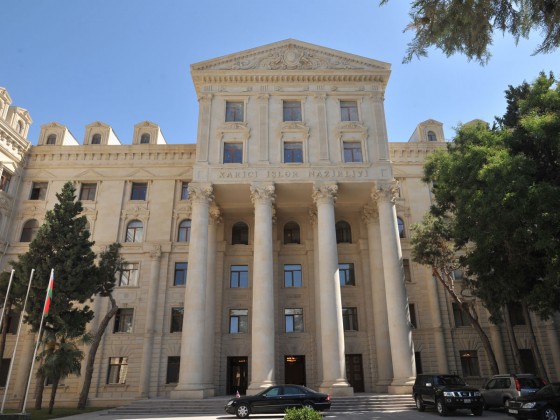
The presence of Armenian armed forces on Azerbaijan’s occupied lands is the main threat to peace and security in the region and main reason for the tension and ceasefire violation, Hikmet Hajiyev, spokesperson for Azerbaijani Foreign Ministry told Trend March 28.
“Personal Representative of the OSCE Chairperson-in-Office Andrzej Kasprzyk, personal representative of the country chairing the OSCE (Germany) and Minsk Group co-chairs made statements on March 18 and March 21 calling to adhere to the ceasefire during Novruz and Easter holidays,” said Hajiyev.
He added that in accordance with the spirit of the holidays, Azerbaijani Defense Ministry immediately responded positively to Kasprzyk’s call.
However, Armenia’s Defense Ministry expressed a provocative attitude contradicting with this call, while the representatives of this country’s Foreign Ministry made contradictory statements distorting the essence of the negotiation process, said the spokesperson.
“Moreover, Armenia continued the activities aimed at aggravating the situation on the contact line of Azerbaijani and Armenian armies and the Armenian-Azerbaijani border by intensively violating the ceasefire with heavy weapons,” Hajiyev added.
Azerbaijan’s Defense Ministry has said that the latest provocative actions were carried out by Armenia on March 27, which left an Azerbaijani officer and a soldier dead, said the spokesperson.
Hajiyev said all this once again proves that Armenia’s true purpose is to deliberately aggravate the situation, prevent the resolution of the Armenian-Azerbaijan Nagorno-Karabakh conflict through negotiations, maintain the status quo and continue the occupation of Azerbaijani territories.
In order to achieve progress in the conflict’s settlement and ensure sustainable ceasefire, Armenia should withdraw its troops from Azerbaijan’s occupied lands as required by the resolutions of the UN Security Council, according to the spokesperson.
Otherwise, Armenia is fully responsible for the current situation, he added.
The conflict between the two South Caucasus countries began in 1988 when Armenia made territorial claims against Azerbaijan. As a result of the ensuing war, in 1992 Armenian armed forces occupied 20 percent of Azerbaijan, including the Nagorno-Karabakh region and seven surrounding districts.
The two countries signed a ceasefire agreement in 1994. The co-chairs of the OSCE Minsk Group, Russia, France and the US are currently holding peace negotiations. Armenia has not yet implemented the UN Security Council’s four resolutions on withdrawal of its armed forces from the Nagorno-Karabakh and the surrounding districts.
Trend
